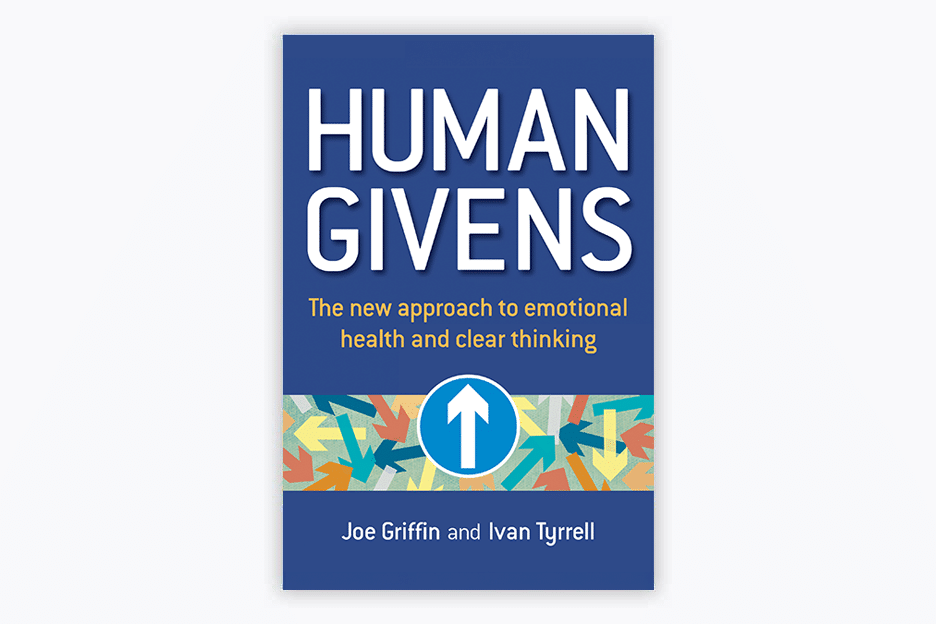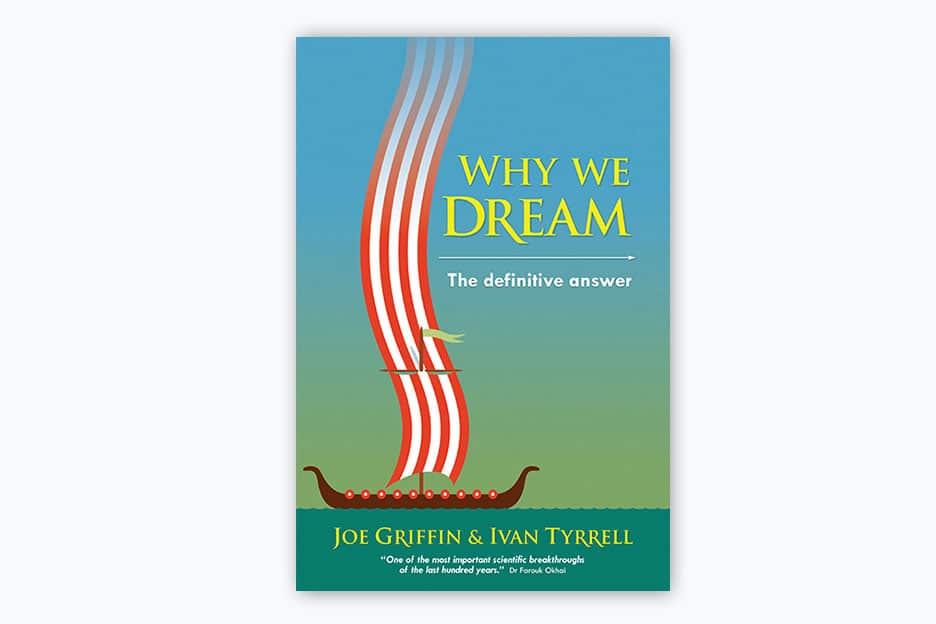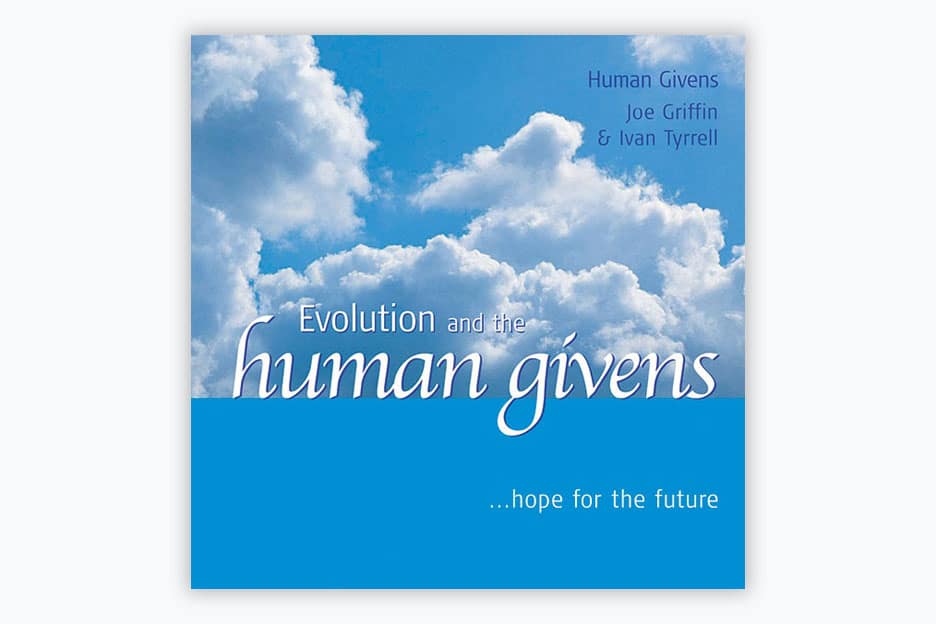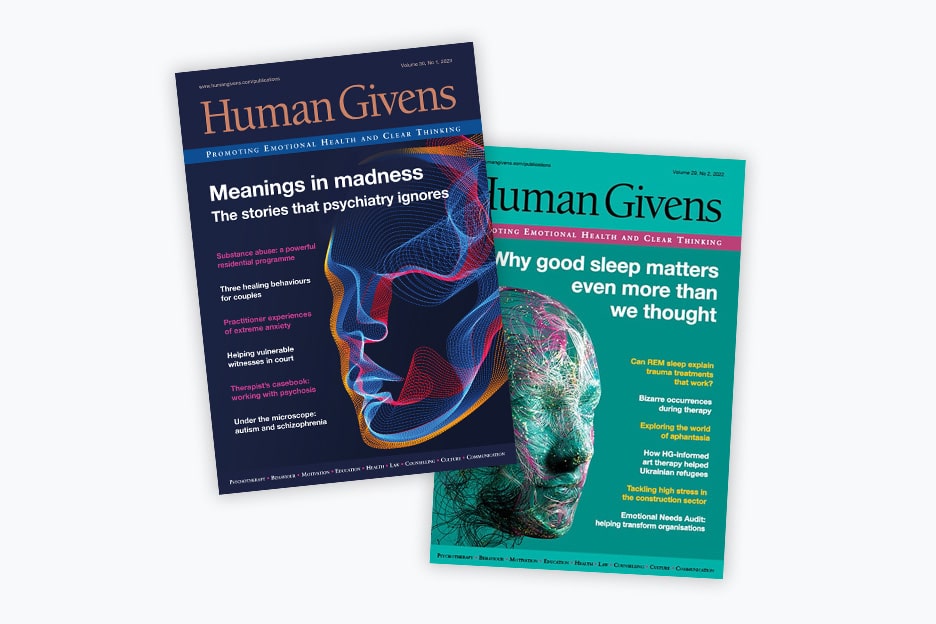Why We Dream: Part 1 – Solving problems: Creativity and Dreams
Here is the first part of a new Human Givens Blog series, extracts from Chapter 7 of the book Why We Dream: The definitive answer.
It is the function of creative men and women to perceive the relations between thoughts, or things, or forms of expression that may seem utterly different, and to be able to combine them into some new forms – the power to connect the seemingly unconnected.
William Plomer
The relationship between creativity and dreams has long been recognised. There are many recorded anecdotes of dreams helping people solve problems. Indeed, Joe’s research into the origin of why we dream is a case in point: as we’ve seen, it too was inspired by a dream which eventually led to this new theory. But, although Joe’s dream clearly led him towards the solution he eventually found, it is, of course, not strictly comparable with the types of dream that appear instantaneously to give rise to solutions to specific problems. In these dreams, the dream content has a direct relationship with the problem being worked on. One of the most famous dream anecdotes of all time is a perfect example of this: Kekule’s discovery of the structure of the benzene ring – one of the most important discoveries in the history of chemistry. Kekule had been trying for years to solve the problem of the nature of the molecular structure of benzene.
Then, one afternoon, I turned my chair to the fire and dozed. Again the atoms were gambolling before my eyes. This time the smaller groups kept modestly in the background. My mental eye, rendered more acute by repeated visions of this kind, could now distinguish larger structures of manifold conformation: long rows, sometimes more closely fitted together, all twining and twisting in a snake-like motion. But look! What was this? One of the snakes had seized hold of its own tail, and the forms whirled mockingly before my eyes. As if by a flash of lightening I awoke .... Let us learn to dream, gentlemen.
Kekule’s dream
The snake swallowing its own tail suggested to Kekule that the structure of this organic compound might be a closed ring. So, would we be right in concluding from this that the dream solved the problem for Kekule which his waking conscious mind could not?
The expectation fulfilment theory offers an alternative interpretation of the events of the dream, as follows. Kekule had worked hard on his problem, trying out many different solutions but without success. He feels he is getting nowhere. He sits by the fire and starts to doze. The dream he then has expresses his deep frustration concerning the problem. He sees the “manifold conformation: long rows, sometimes more closely fitted together” – that is, the numerous solutions he had tried, some more closely fitting the solution than others “all twining and twisting in snake-like fashion”. This suggests his continuing attempts to fashion or model the correct shape of the structure. “What was this? One of the snakes had seized hold of its own tail, and the forms whirled mockingly before my eyes” – we see here a metaphorical expression of Kekule’s frustration. His attempts at a solution are just going around in circles. He feels the problem is making a fool of him – mocking him. (Feelings – emotions – are, of course, what dreams are all about because it is unacted out emotional arousal patterns that dreams deactivate by completing them.)
This interpretation is given further credence by the fact that Kekule’s dream occurred just after he nodded off to sleep. This stage of sleep is not REM sleep proper but the drowsy transitional state called ‘hypnogogic sleep’. The EEG brainwave pattern in hypnogogic sleep is similar to REM sleep, but the lower brainstem is not as involved as it is in full-blown REM sleep. As we saw from Silberer’s research, a current waking introspection may become metaphorically translated during hypnogogic sleep. We would therefore expect Kekule’s dream to reflect his waking frustration at the lack of progress in his attempts to solve his problem. This is exactly what Joe’s dream analysis shows did in fact happen.
However, although the dream represents Kekule’s frustration at not being able to find the correct solution to the problem, the vivid image in it of going around in circles did break him free from his entrenched mental set of looking for a linear solution to the problem and opened up to him the possibility that a circular structure might provide the solution. Are we to assume, then, that it was pure coincidence that led to the selection of the image of the whirling circle to represent the feelings of frustration? Research by Dement suggests an answer to this problem, but first we must consider how the creative process works.
Knowing the basics of the expectation fulfilment theory of dreaming will enhance your enjoyment of this blog series, so if you are not already familiar with it you can find out more on our free online course ‘Why do we dream?‘ with Joe Griffin.
Of course you could read the entire book, (Kindle version also available via Amazon) where all references can be found.





